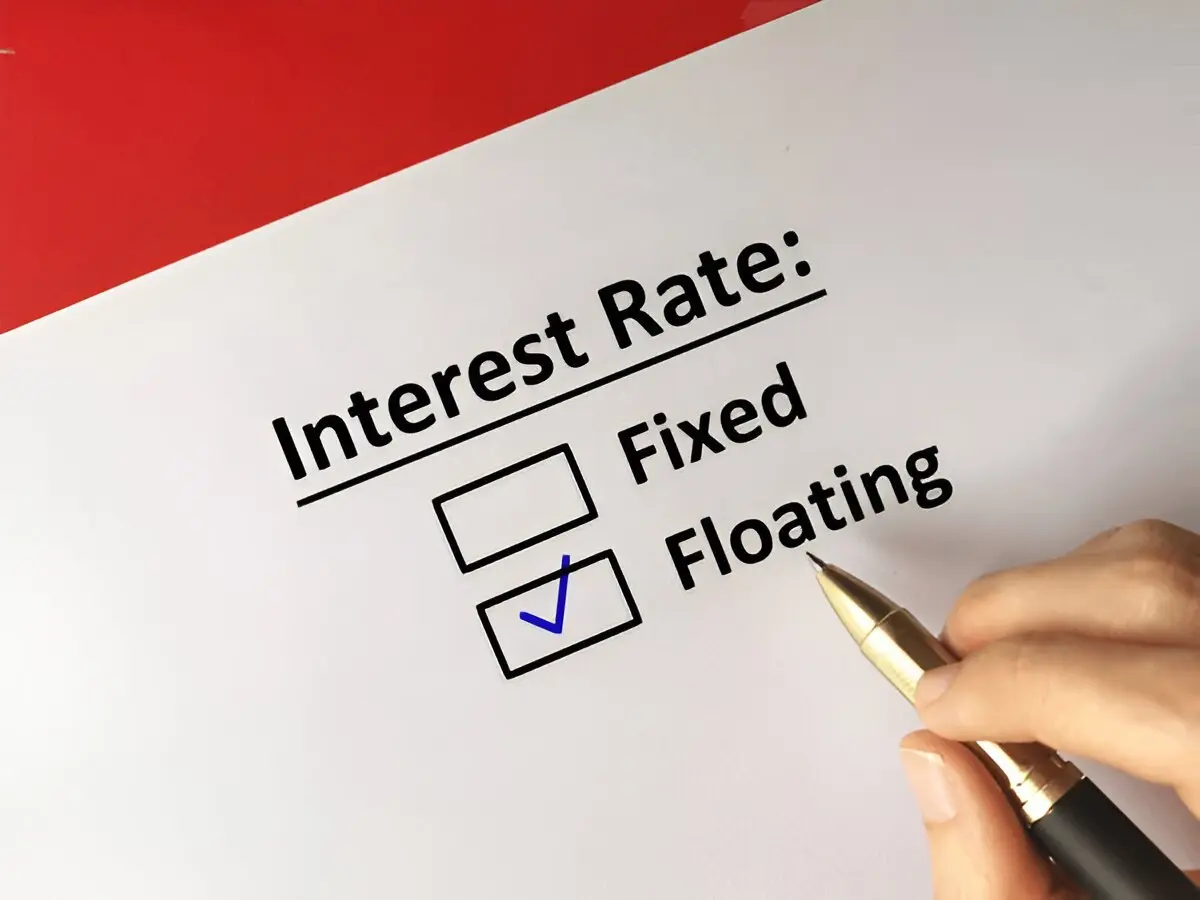Choosing between fixed and floating interest rates is one of the biggest decisions borrowers face when taking a loan. Interest costs determine how heavy your Equated Monthly Instalments (EMIs) feel over the years, so the choice is not just about percentages but also about peace of mind, financial planning, and predicting future money flows. In India’s lending market of 2025, lenders have sharpened their offerings, giving borrowers multiple options that cater to different income types, risk appetites, and loan tenures. Understanding the difference between fixed and floating interest rate plans is the first step in deciding which one is right for you.
Let us break it down in simple terms.
Table of Contents
What is a Fixed Rate of Interest?
Fixed rate of interest means your loan EMI remains the same for the entire tenure, no matter how market rates move. When you choose this option, the lender locks your rate on day one and keeps it steady until the loan is closed. This predictability makes it easier to budget monthly expenses.
In the current Indian lending space, fixed rates are usually priced about one to two percent higher than floating rates. The reason is simple. Lenders build in a cushion for future market risks like inflation or repo rate hikes. For short-term loans or borrowers who prefer stability, paying this slightly higher cost is often worth the peace of mind.
If you are exploring types of personal loans, you will notice that fixed rate options are often suggested for education loans, smaller home loans, or personal loans with tenure under seven years, where predictability outweighs the premium cost.
Pros and Cons of Fixed Rate of Interest
Like every financial decision, choosing fixed rates comes with advantages and trade-offs. Let us look at both sides.
Pros
- Predictable EMIs: Since the rate does not change, your monthly instalments remain constant. Salaried individuals or those with stable income find this helpful because it makes budgeting easy.
- Shield from inflation: If the economy enters a cycle of rising interest rates, your loan remains unaffected. You continue paying at the agreed rate while new borrowers face higher costs.
- Best for shorter tenures: For loans under seven years, the fixed premium is relatively small. Paying slightly more initially brings long-term stability and peace of mind.
Cons
- Higher initial cost: Compared to floating rates, you start by paying a higher interest rate, which means slightly higher EMIs from the beginning.
- No benefit when rates fall: If the Reserve Bank of India (RBI) cuts repo rates and lenders lower floating rates, you still pay the same higher amount.
- Conversion charges: If you want to switch to a floating plan later, lenders may levy a conversion fee.
This is where Instant Personal Loans often highlight fixed rates as a safe bet, especially for borrowers who prioritise predictable repayment over chasing potential savings.
What is a Floating Rate of Interest?
A floating rate of interest is dynamic. It moves up or down depending on market benchmarks such as the RBI’s repo rate or the Marginal Cost of Funds based Lending Rate (MCLR). Whenever these benchmarks shift, the interest on your loan adjusts, and so does your EMI or your loan tenure.
In 2025, floating home loan rates in India start at around 7.35 percent. While they are lower than fixed rates at the beginning, borrowers need to be prepared for fluctuations.
If you are looking at emergency loans, floating rates may save you money when market rates are falling or stable. But during inflationary cycles, your EMIs can increase and strain your cash flow.
Pros and Cons of Floating Rate of Interest
Floating rates give flexibility and opportunity but also require tolerance for risk.
Pros
- Lower starting cost: Floating rates typically begin at a lower point than fixed rates, so your EMIs are lighter in the early years.
- Savings in rate-cut cycles: If RBI reduces repo rates or banks lower lending benchmarks, your EMI falls, and you save interest over the tenure.
- Prepayment flexibility: Many floating loans allow you to prepay or refinance without heavy penalties, giving you room to save on long-term costs.
- Ideal for long tenure loans: For loans extending beyond ten years, floating rates may lead to significant savings, as fluctuations often balance out over the long run.
Cons
- Uncertain EMIs: Since rates can increase, you may find your monthly outflow rising unexpectedly. This makes budgeting harder.
- Risk of higher total cost: In an environment where interest rates rise consistently, floating loans may end up more expensive than fixed ones.
- Needs financial flexibility: Borrowers must be comfortable adjusting finances to handle payment spikes.
Borrowers exploring loans for women often find floating rates attractive for long-term home loans, where market cycles can work in their favour.
What is the Difference Between Fixed and Floating Interest Rate?
Understanding the difference between fixed and floating interest rate options is the core of making an informed decision.
If you are comparing loan options, always ask yourself: fixed or floating interest rate which is better for your situation. For many borrowers, the answer lies in matching tenure, income stability, and market outlook.
For those who need immediate access to funds, comparing both options becomes critical while seeking quick loans, since repayment costs can vary drastically based on the rate structure you choose.
Summary
In 2025, the decision between fixed and floating interest rates depends on four key factors:
- Economic outlook: If repo rates are expected to climb, a fixed rate protects you from shocks. If rates are likely to remain steady or decline, floating rates help you save.
- Loan tenure: Fixed rates work better for short durations under seven years, while floating options suit longer durations above ten years.
- Borrower profile: Salaried individuals prefer fixed rates for predictability. Self-employed or risk-tolerant borrowers lean toward floating for flexibility and potential savings.
- Risk appetite: If you value stability over chasing savings, fixed rates are for you. If you are comfortable riding the market cycle, floating may bring better returns.
-
Some lenders even offer hybrid products that start with a fixed rate for the first few years and then shift to floating, giving borrowers a balance of stability and potential savings.
Ultimately, the choice of fixed and floating interest rates is not about which is universally better, but about which aligns with your financial goals and comfort level.








